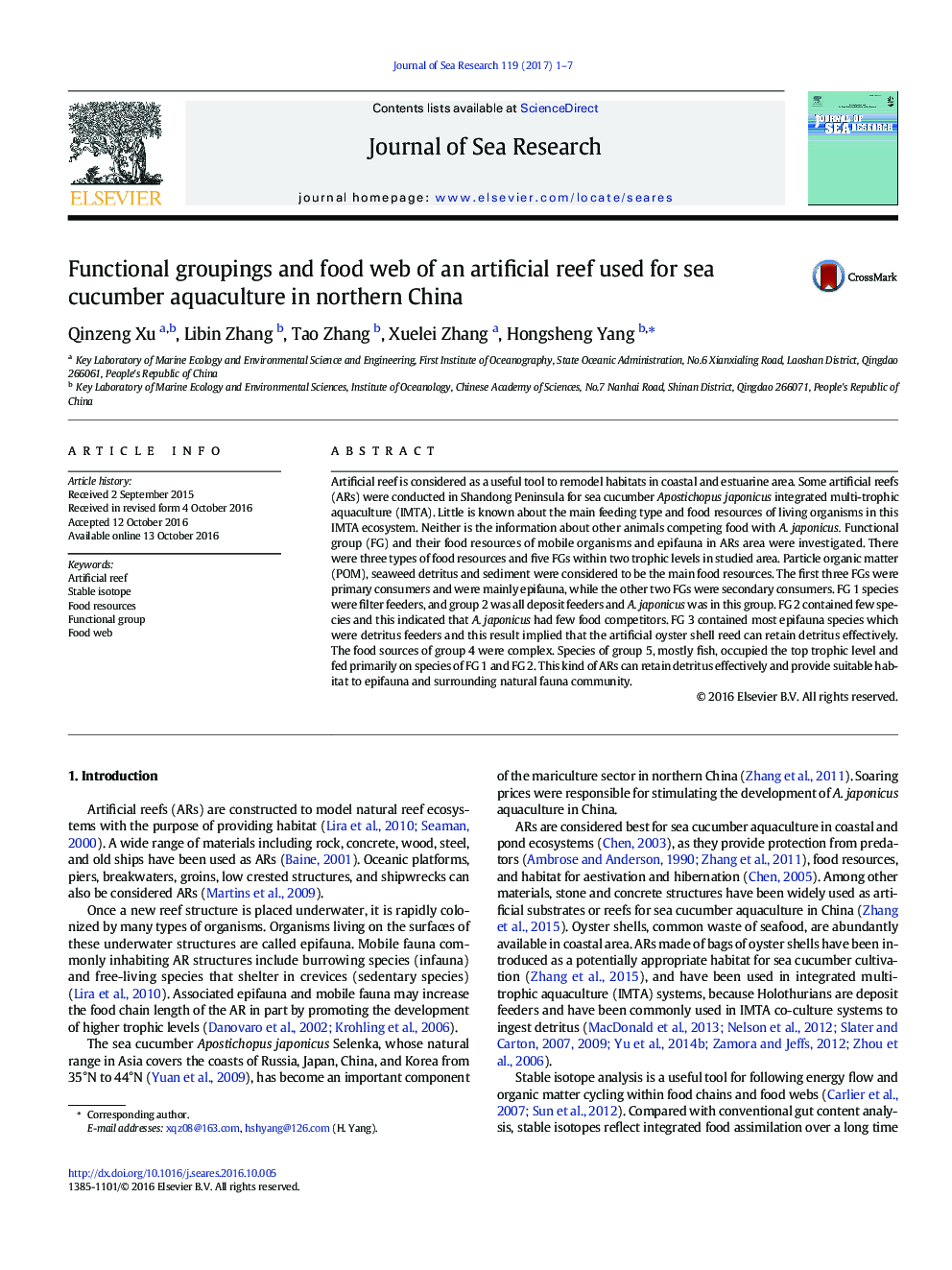| کد مقاله | کد نشریه | سال انتشار | مقاله انگلیسی | نسخه تمام متن |
|---|---|---|---|---|
| 4549496 | 1627456 | 2017 | 7 صفحه PDF | دانلود رایگان |
• Using functional group to study the food web of an artificial area in IMTA coastal area
• Analyzed the proportional contribution of potential food to each group
• Evaluated the trophic level and food resources of holothurian A. japonicus in an IMTA coastal area
Artificial reef is considered as a useful tool to remodel habitats in coastal and estuarine area. Some artificial reefs (ARs) were conducted in Shandong Peninsula for sea cucumber Apostichopus japonicus integrated multi-trophic aquaculture (IMTA). Little is known about the main feeding type and food resources of living organisms in this IMTA ecosystem. Neither is the information about other animals competing food with A. japonicus. Functional group (FG) and their food resources of mobile organisms and epifauna in ARs area were investigated. There were three types of food resources and five FGs within two trophic levels in studied area. Particle organic matter (POM), seaweed detritus and sediment were considered to be the main food resources. The first three FGs were primary consumers and were mainly epifauna, while the other two FGs were secondary consumers. FG 1 species were filter feeders, and group 2 was all deposit feeders and A. japonicus was in this group. FG 2 contained few species and this indicated that A. japonicus had few food competitors. FG 3 contained most epifauna species which were detritus feeders and this result implied that the artificial oyster shell reed can retain detritus effectively. The food sources of group 4 were complex. Species of group 5, mostly fish, occupied the top trophic level and fed primarily on species of FG 1 and FG 2. This kind of ARs can retain detritus effectively and provide suitable habitat to epifauna and surrounding natural fauna community.
Journal: Journal of Sea Research - Volume 119, January 2017, Pages 1–7
